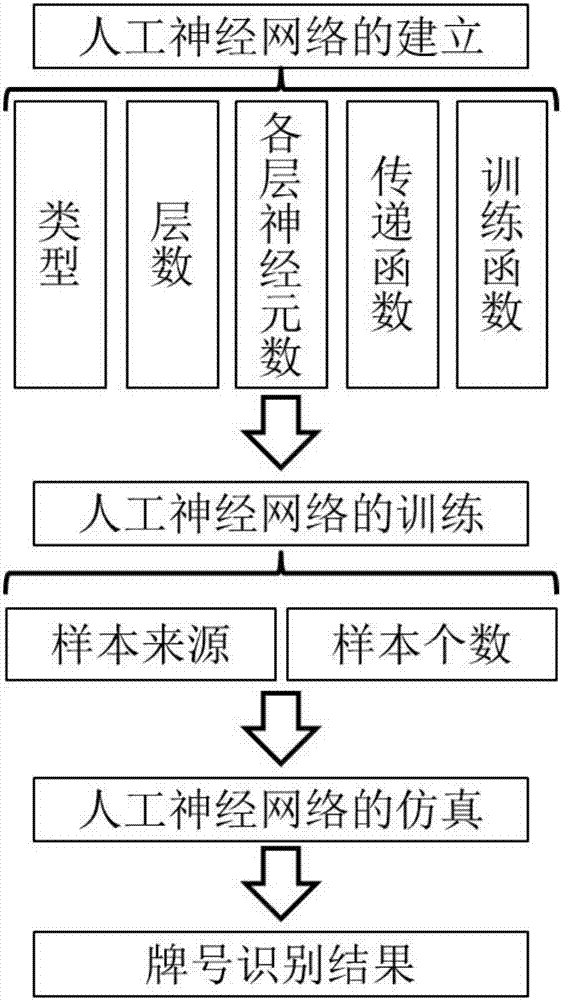Alloy grade identification method based on artificial neural network
A technology of artificial neural network and identification method, which is applied in the field of alloy detection to achieve accurate identification
- Summary
- Abstract
- Description
- Claims
- Application Information
AI Technical Summary
Problems solved by technology
Method used
Image
Examples
Embodiment
[0051] This embodiment sets up a feedforward network, and this artificial neural network has 1 input layer, 1 output layer, 2 hidden layers (the neuron number of each layer is 20), and the hidden layer transfer function adopts hyperbolic tangent S type transfer function (tansig), the output layer transfer function uses a linear transfer function (purelin), and the training function uses a quantized conjugate gradient method (trainscg), such as figure 2 shown.
[0052] The samples in this embodiment are derived from actual measured data (ie, the test results of actual samples of each brand in the brand library). There are 7 grades in the grade library involved, and the grade names are: grade A, grade B, grade C, grade D, grade E, grade F, and grade G. Brand identification codes are 1, 2, 3, 4, 5, 6, 7 respectively. Each sample in the brand library is tested 50 times (45 times of test data are used as neural network input, and the other 5 times of test data are used for resul...
PUM
 Login to View More
Login to View More Abstract
Description
Claims
Application Information
 Login to View More
Login to View More - Generate Ideas
- Intellectual Property
- Life Sciences
- Materials
- Tech Scout
- Unparalleled Data Quality
- Higher Quality Content
- 60% Fewer Hallucinations
Browse by: Latest US Patents, China's latest patents, Technical Efficacy Thesaurus, Application Domain, Technology Topic, Popular Technical Reports.
© 2025 PatSnap. All rights reserved.Legal|Privacy policy|Modern Slavery Act Transparency Statement|Sitemap|About US| Contact US: help@patsnap.com



